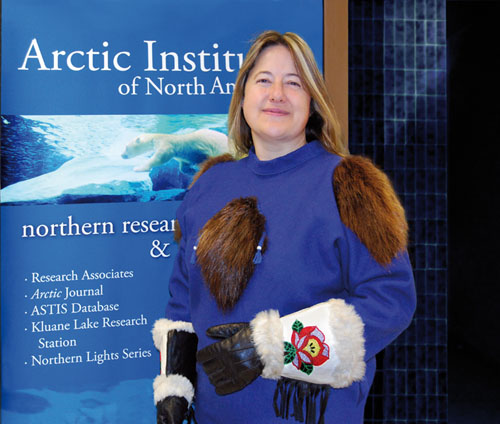
Chercheur • Canada
Je souhaite que les efforts conjoints des gouvernements permettent de préserver les écosystèmes arctiques
Magdalena A. K. Muir est chercheur à l’Institut Arctique d’Amérique du Nord depuis 1991. Géologue et juriste de formation, elle travaille à la croisée des enjeux environnementaux, juridiques et politiques en Arctique. De 2002 à 2004, elle a été secrétaire exécutif du Secrétariat international de conservation de la flore et de la faune arctiques. Depuis 2004, elle est membre du bureau scientifique de la EUCC – L’Union côtière.
I have been enthralled by the Arctic since I first travelled there in the late 1980s. The Inuvialuit hunters and trappers of the Beaufort Sea spoke of the changes they were experiencing: warmer temperatures, different winter ice and unusual birds and fishes. The traditional knowledge that they had relied on for centuries was no longer totally accurate. After that, I focused on Arctic climate change, but still conscious of impacts on plants, animals and people. One of the key issues is the impact of climate change on terrestrial, marine and coastal ecosystems and peoples of the Arctic. Will the Arctic tundra and wetlands remain a carbon sink as the changing climate erodes coasts, and tundra and wetlands shift to deserts, shrubs and boreal forests? Approximately fifty per cent of the Earth’s carbon is found in the frozen soils, permafrost and deposits underlying the Arctic tundra, desltas and boreal forests. When permafrost melts, it releases carbon dioxide and methane. When wetlands dry, they release methane. Methane also may be released from marine sediments in a warmer Arctic. The transition of tundra and wetlands to shrubs, boreal forests and deserts may either hold or release greenhouse gases. Will all these ecosystems become carbon sources and release significant amounts of carbon dioxide and methane, accelerating global change? It is not known if these gases will be released temporarily or permanently, or remain trapped. As the temperatures rise and tundra and wetlands are replaced by shrubs and forests, there is greater risk of wildfires, which also release gases. What happens to the species and peoples that are dependent on existing ecosystems? How will they adapt to changes that eliminate tundra, wetlands and coasts and dependent species? Caribou, reindeer, polar bears and marine species depend on tundra, coasts and sea ice, and may not survive if their habitat disappears. Migratory birds breed in great numbers during the brief Arctic summer. A world without caribou, polar bears or migratory birds would be a lesser world. What will be the impacts on the peoples, communities and cultures who depend on these species? Northern peoples and residents are monitoring climate changes, and making necessary changes in their herding and hunting practices, cultures and communities. I hope that our combined efforts along with those of governments, northern peoples and scientists will allow the preservation of the Arctic ecosystems and lifestyles and slow global climate change.

